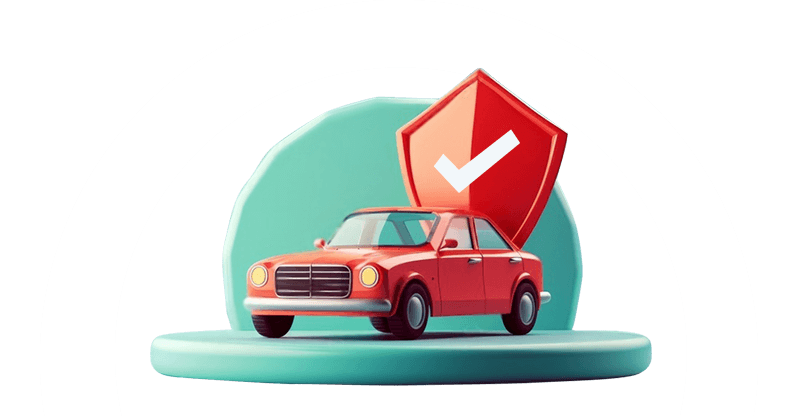
Car insurance is mandatory by law in the Philippines. Therefore, you can’t skip this expense even if you want to. Now, because it is non-negotiable, the government has ensured every car owner can afford the bare minimum coverage. What’s the advantage, you ask? Well, for that, you have to know the basics of car insurance.
In the Philippines, car insurance is broadly divided into two categories - compulsory third-party liability (CTPL) insurance and comprehensive insurance. No, that’s not it, there are more slightly less popular options which you can pick as per your requirements. Coming to the cost, it’s the CTPL insurance that is a must, and therefore, it's quite affordable as well. As for comprehensive and other coverage options, they offer quite a few protections and are expensive. Interested in knowing more about CTLP and Comprehensive insurance and their differences? Click here.
In this article, we’ll be discussing all about car insurance costs and all the variables that can influence your premium. So let’s get started.
Car insurance cost in the Philippines
CTPL car insurance cost
CTPL insurance offers financial protection against damage to a third party. Note, by third party we mean someone who isn’t a passenger in your car, it can be a pedestrian or a person sitting in another car. What’s important is that CTLP insurance offers no protection to you, your passengers, and your car.
It is required by law and is a prerequisite for car registration and renewal. However, it is just a basic coverage and can’t be substituted for extensive and more expensive car insurance policies.
Price? As mentioned, CTPL insurance isn’t costly; it ranges from around PHP 650 or less to PHP 1,500 annually. The factors that determine the cost are mostly the car’s value, make, and model.
Comprehensive car insurance cost
Comprehensive car insurance offers wide coverage compared to CTPL. Meaning, it protects not just third parties but you and your car as well from a wide range of incidents, including accidents, riots, and even natural disasters.
Since it offers so much coverage, it is expensive and therefore optional, but highly recommended. You can customize it as per your needs and budget, and enjoy extensive coverage and peace of mind. But what about the cost?
The price of a comprehensive car insurance policy ranges between PHP 10,000 to PHP 100,000 or more annually. Yes, it is quite expensive, but for the extensive coverage it offers, this price is too little to pay.
In case you need a broader idea about the price, here's the car value and insurance cost approximate overview.
- Affordable, entry-level car - PHP 10,000 per year
- Mid-tier car - PHP 10,000 to PHP 20,000 per year
- Luxury car - over PHP 100,000 per year
 Photo from Freepik
Photo from FreepikFactors affecting the cost of car insurance
Here’s the list of key factors that influence the cost of car insurance in the Philippines -
- Car’s make and model
- The car’s condition
- Owner’s credit history (loan, dues)
- Policy inclusions
- Owner’s age
- Profession (high risk or mediocre)
Car insurance add-ons & their impact on cost
When we talk about car insurance, that too comprehensive insurance, one thing that pops up sooner or later is add-on coverage. As the name suggests, add-ons enhance the protection plan your insurance policy provides. But this advantage comes at a cost, i.e., a higher premium. A few common add-on coverage options include -
- Acts of God (covering flood, typhoon, earthquake, etc.) can add 30 to 40% to your comprehensive premium.
- Roadside assistance (towing, flat tyre, etc.) adds around PHP 300 to PHP 1000
- Theft and vandalism coverage adds an extra PHP 1000 to PHP 3000
- Personal accident insurance (medical and death benefits) adds PHP 500 to PHP 2,000
Car insurance policy - Hidden/additional costs
Before signing the car insurance contract, it is necessary to go through the terms and conditions. This will educate you about the scope of the policy and any hidden fees or penalties. The latter ones are not apparent in quotes and usually include -
- There are a few damages, tagged under exclusions, that are not covered and may cost you later.
- The participation fee is the amount of money that will come out of your pocket each time you make a claim. Here in the Philippines, it covers the depreciation rate and deductible fee.
- Processing and miscellaneous fees that mostly depend on the location of the booking unit.
 Photo from coverlink
Photo from coverlinkTips to lower car insurance costs
Since we are talking about the cost of car insurance, it becomes crucial to discuss tips to reduce this essential expense.
- One of the easiest things to do is practice defensive driving. A clear driving record is a direct representation of a responsible driver, leading to lower premium rates from the insurance company.
- Spend some money and get a few anti-theft devices installed in the car. Doing so will enhance your car’s safety and might lead to a discount or reduced premium.
- Another way to reduce the premium is by agreeing to pay a higher deductible per claim. It is a smart way to show your genuineness to the insurance provider.
- Before finalising your insurance plan, analyse your requirements; do not spend extra money on coverage options that make no sense for you.
- Always, always, get quotes from multiple providers, compare the inclusions and exclusions, before putting a seal on the papers.
- Last but not least, here are a few discounts you can seek (if applicable) from your insurance provider: No-Claim Bonus, multi-policy (bundle) policy discount, and affiliation discounts.
Car insurance cost - Used vs New cars
One of the important factors on which car insurance cost depends is whether the concerned unit is brand-new or used. Coming straight to the point, new cars are expensive to insure compared to used units. Why? Insurance providers take into consideration a few parameters to determine the insurance premiums, and here’s how new and used cars respond differently.
| Car value |
New car - High price tag, high premium Used car - Lower value; low premium |
| Replacement cost |
New car - Usually high repair and replacement costs; high premium Used car - Not so much; low premium |
| Tech advancement |
New car - Equipped with high-tech sensors, cutting-edge tech, which repairs expensive, high-premium Used car - Less technologically advanced, lower repair cost, affordable premium |
| Depreciation |
New car - High potential loss; high premium Used car - Already gone through loss; low premium |
| Likelihood of theft |
New car - More attractive to thieves; high premium Used car - Less on radar; low premium. |
Car insurance renewal: Cost/Premium expectation
In the Philippines, most car insurance policies last for a year, meaning the renewal will strike exactly after 12 months from the date the policy started. But is it required? Yes, if you want to continue the protection shield that your car insurance policy was providing (against theft, damage, fire, flood, etc). If not, then be prepared to pay for all the repairs and medical bills from your pocket.
We’ll discuss the car insurance renewal process in detail in another blog; for now, let’s concentrate on the cost aspect, i.e., premium. Here are the factors that influence the renewed policy’s premium -
- Alteration or addition to the policy can affect the premium directly. So, if during the renewal process you decide to revise the policy as per your current needs, it may lead to changes in the premium. For instance, new add-ons will increase and coverage omissions will reduce the premium.
- While calculating your premium for the revised policy, the provider inspects your claim history, and if in the claim you are found at fault, the premium is most likely to increase.
- Depreciation is another factor taken into consideration when calculating the premium. Why? The former has a negative impact on the value of the car, and the premium depends on the car’s value. So, when the car’s value reduces, the cost of insurance also lowers.
Car insurance offline vs online: Cost analyses
With the advent of technology, the insurance market has witnessed several changes (mostly good), which have helped many enjoy the institution's benefits. One such technological advancement is taking insurance online, wherein customers can apply, enjoy, and pay for the service from the comfort of their homes.
Here, we are, however, interested to see if there is a difference in the car insurance cost when it comes to online and offline media. It is a widely stated fact that online car insurance is cheaper compared to offline insurance. We don’t have the exact percentage, but we know the reason behind it, i.e., online insurance has fewer overhead/operational costs, high availability of discounts, and confirmation of being the cheapest (& effective) policy for you, thanks to instant comparison.
Note that our intention is not to undermine offline insurance in any way. This one has its own set of benefits, like one-on-one service and better negotiation opportunities.
Bottom line
Car insurance is an essential part of your car ownership journey, which you can’t skip. And that is the reason why CTPL insurance is affordable, so that everyone can get this basic coverage. As for comprehensive coverage, it is optional and expensive, however, it offers a wide range of financial protection against unfortunate events involving the insured car. We therefore advise you to analyse your budget and insurance needs thoroughly before moving forward to finalise the deal with your insurance agent. Also, compare the quotes from different providers and ask for the discount and additional perks.
FAQs
What are the different types of car insurance coverage available to Filipinos?
A Filipino car owner has several coverage options at his/her disposal which can be picked as per requirement. While Compulsory Third Party Liability (CTPL) insurance is mandatory, others like Comprehensive Insurance, Acts of God, Auto Personal Accident, and Excess Bodily Injury are optional, but highly recommended.
What is the difference between CTPL and Comprehensive insurance?
CTPL is required for vehicle registration in the Philippines and offers coverage against third-party injury/death. While comprehensive insurance is optional and offers a wide range of protection, including damage against theft, fire, own vehicle damage, third-party property damage and more.
What factors determine the cost of car insurance in the Philippines?
Several factors determine the cost of insurance in the country, including the driver’s age, driving history, types of coverage, the car’s model and make, and the insurance provider.
Is it possible to cancel a car insurance policy?
Yes, however, before cancelling your car insurance policy, check your policy for any cancellation fee or implications on future premiums.
How much does CTPL insurance cost?
Depending on the vehicle, the cost of CTPL insurance ranges from PHP 650 (or lower) to PHP 1,500 per year.
Which is the cheapest car insurance plan in the Philippines?
In the Philippines, CTPL insurance is the most affordable car insurance available. However, some insurance providers also offer cheap comprehensive plans.










